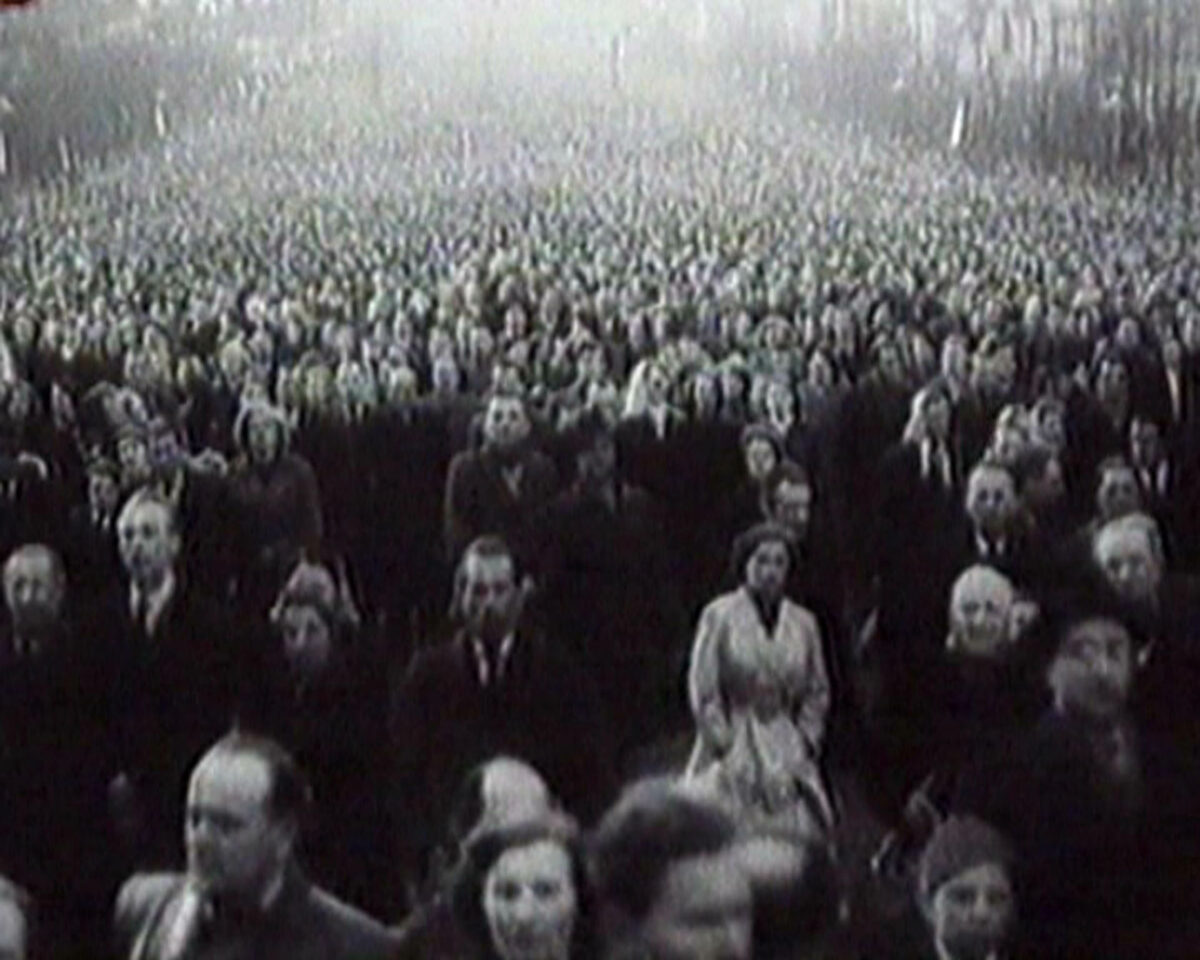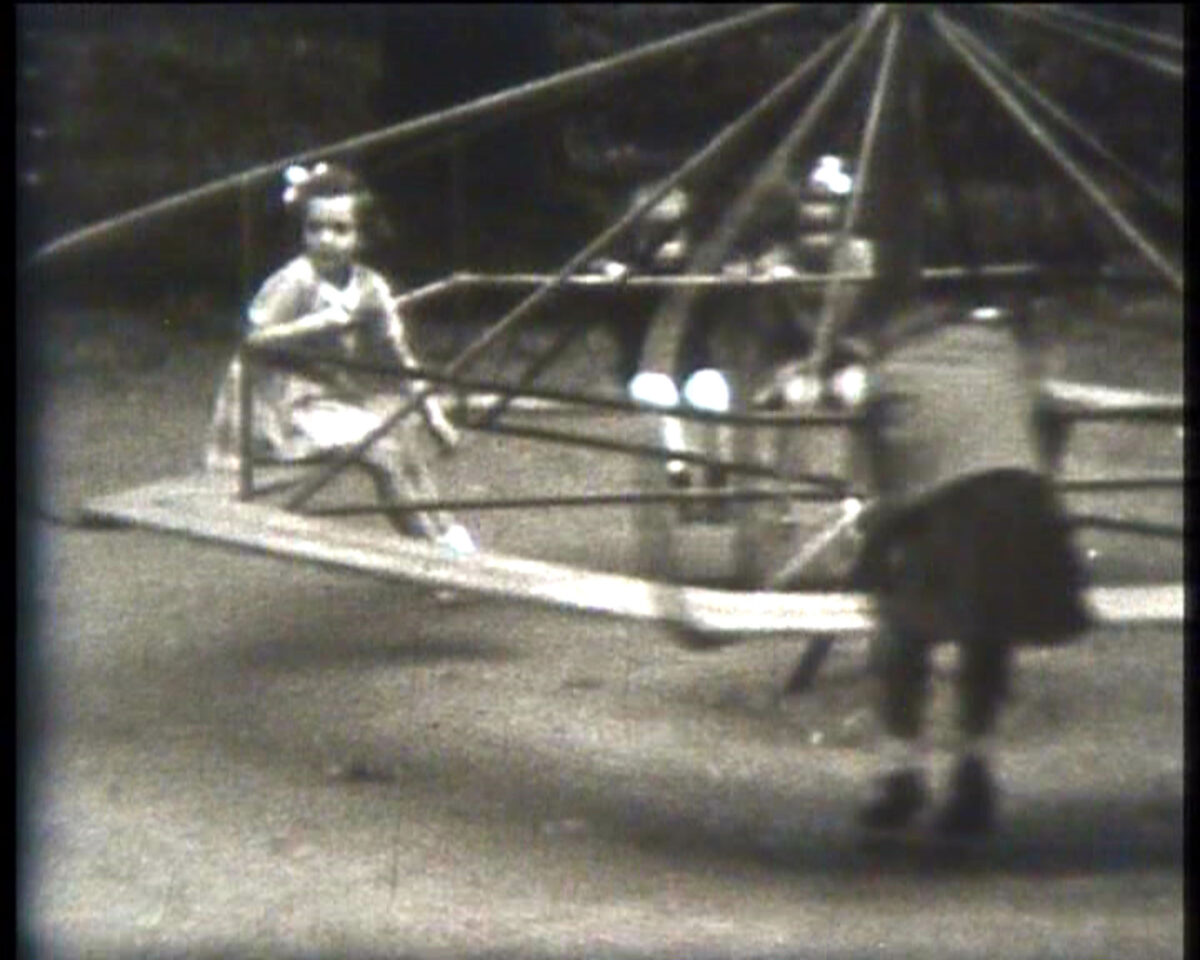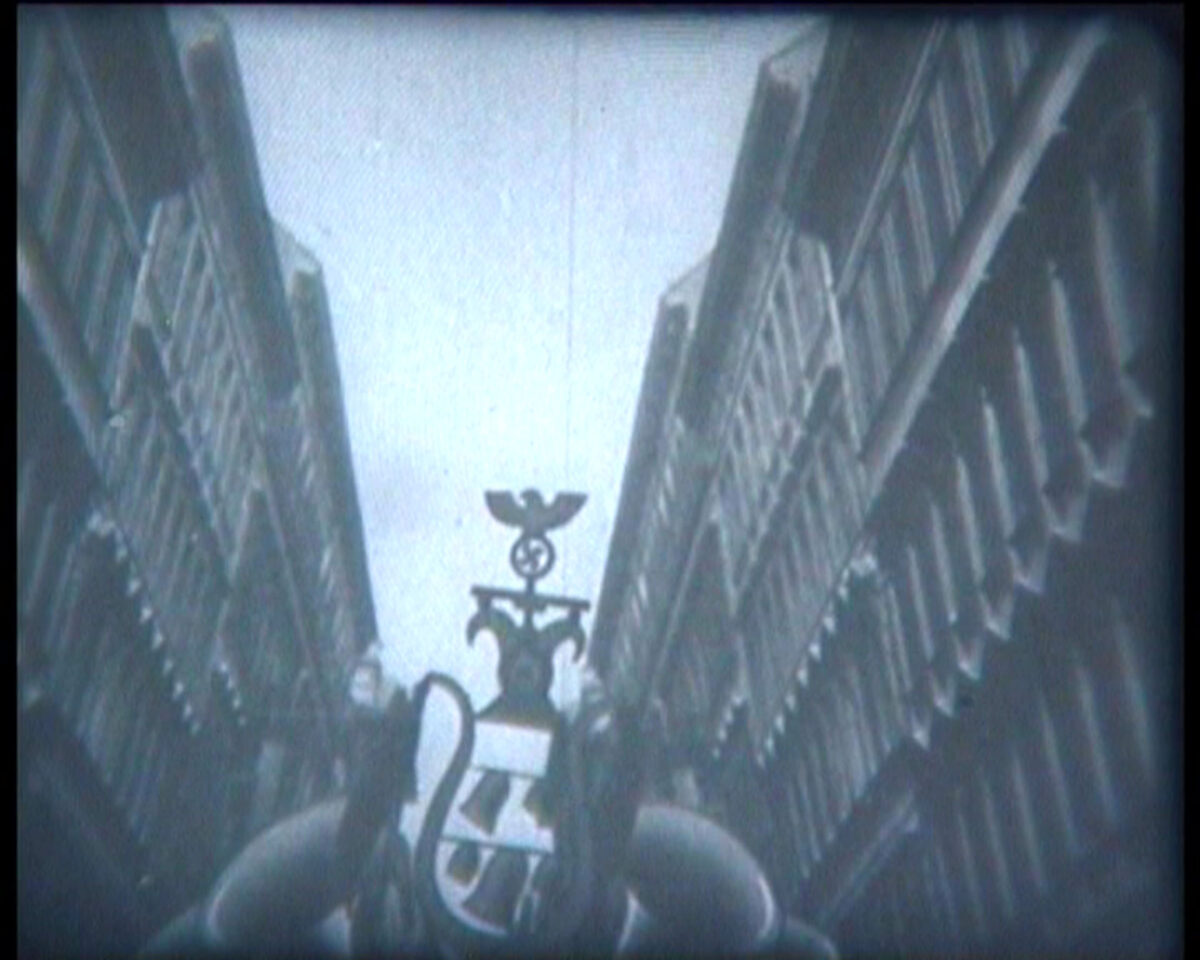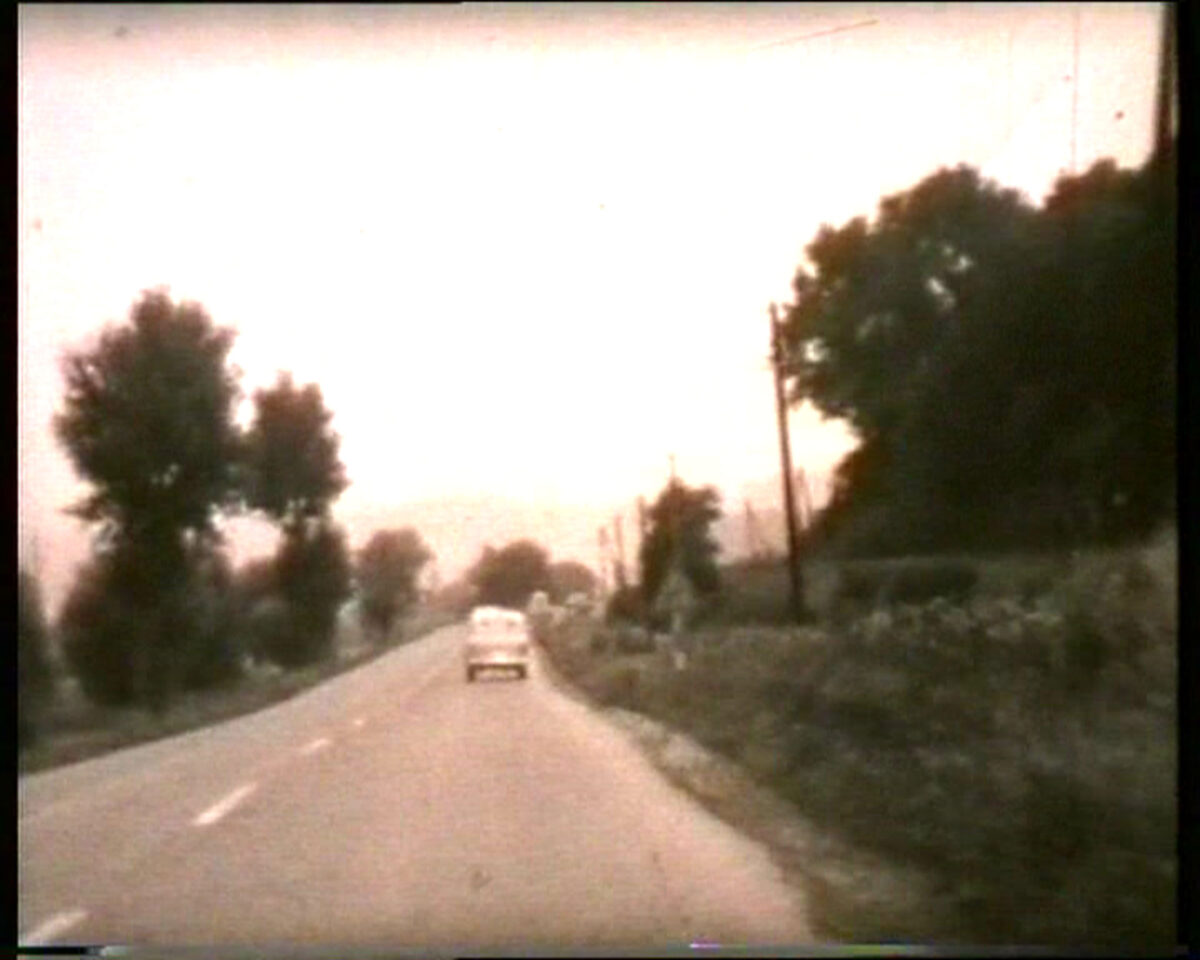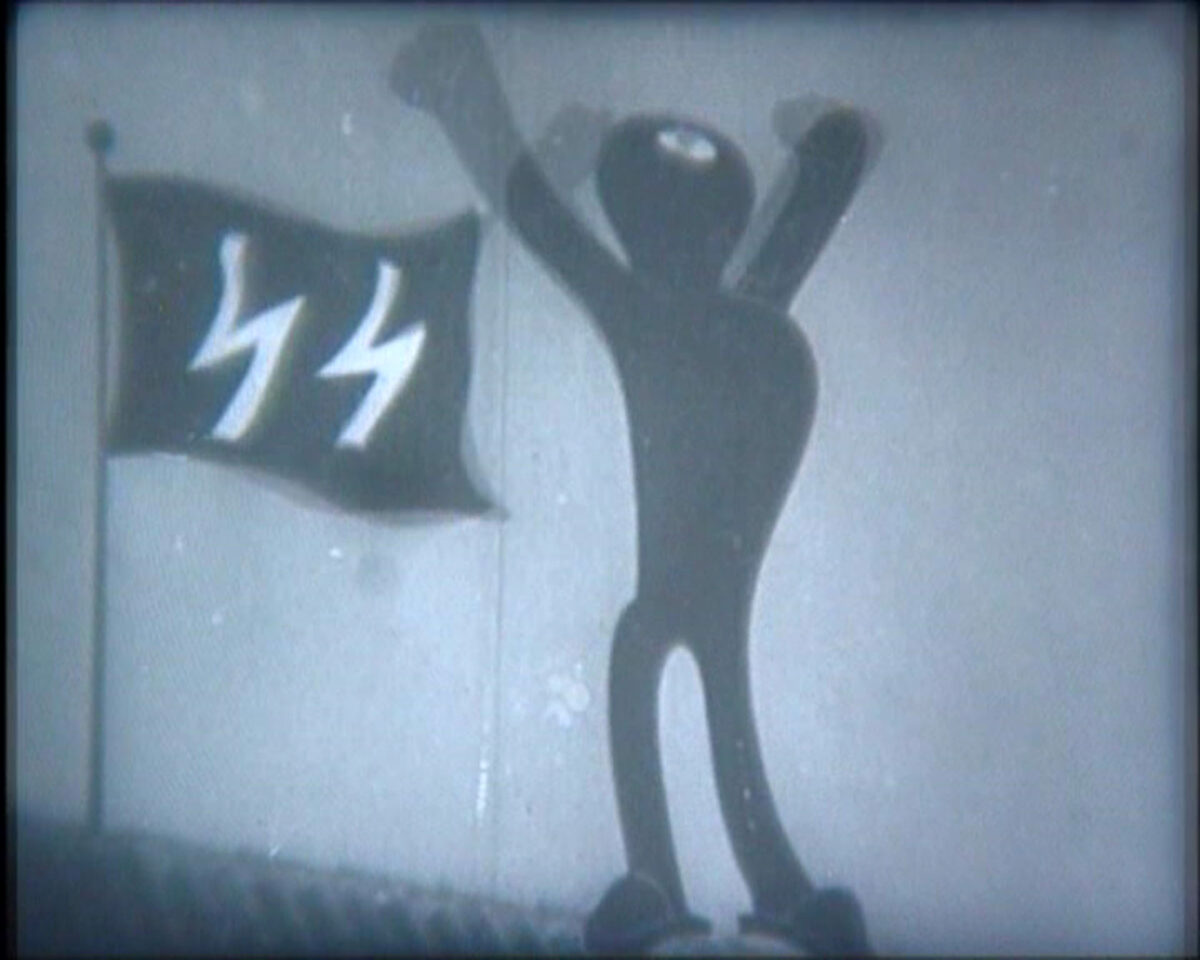Born 1973 in Prague, lives in Prague, Czech Republic
“What we see and what we are able to interpret is only the broken part of some whole unit in the past. The network of contexts and connections with other objects serves as a guide to the reconstruction and interpretation of the fragments.”
Zbyněk Baladrán’s video work Kristián (2003) consists of scenes from two Czech movies, edited together. Springman and the SS (1946) is an animated film about a legendary chimneysweep with springs on his feet who drives the Nazis out of occupied Prague. Kristián (1939) is a romantic comedy about a mysterious bar patron and his female conquests. The film presents a joie-de-vivre independent from the wartime circumstances under which it was made. But the Nazi terror depicted in Springman and the SS inexorably made itself felt behind the scenes: Because actor Oldřich Nový refused to divorce his Jewish wife, they were both sent to a concentration camp. The films are two of the countless videos that Baladrán has acquired from private collections. This “archeological trove” consists of well-known Czech movies, private videos, and educational films.
In his project Projection, Baladrán’s focus is on the time around the Second World War. Kristián and Springman and the SS share a humorous narrative form. In Baladrán’s Kristián, however, editing and music create a contemplative and somber mood that reflects our attitude to this period in history. His video is a visualization of the “archaeological field”—an analogy for the impossibility of capturing a complete picture of the past or anything else. At the same time, his work uses various films as documents of their time in order to present a template for a solution. This can be understood in both epistemological as well as political (i.e., democratic) terms—democratic in the sense that the diversity of sources enables critical considerations, as opposed to the monopoly of dictatorship.
Baladrán’s art breaks down the uncritical, one-dimensional consumption of (movie) images and challenges the viewer to consider why these images were made. The film fragments are combined in an attempt at offering a differentiated and more complete look at the past. Each cut and edit offers room for interpretations.
